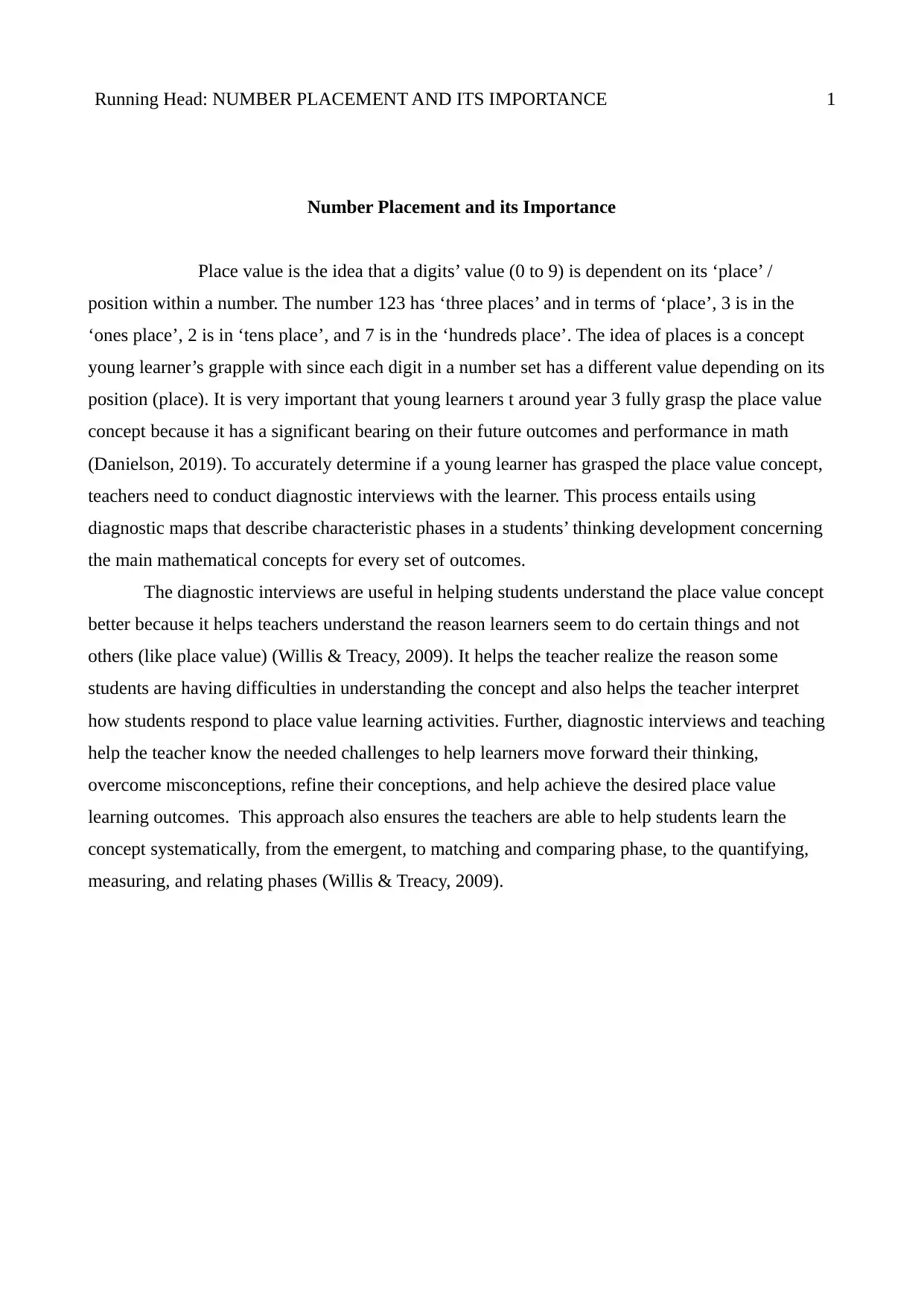Place Value: Importance, Methods, and Student Assessment
VerifiedAdded on 2022/11/17
|2
|409
|27
Homework Assignment
AI Summary
This document delves into the critical role of place value in early mathematics education, emphasizing its importance for young learners. It discusses the concept of place value, the methods for assessing a student's understanding, and the significance of diagnostic interviews in identifying and addressing learning gaps. The paper also touches on the process of teaching place value to students, which helps them to develop a strong foundation in mathematics. It emphasizes the need for teachers to understand the reasoning behind students' responses to place value learning activities and how this understanding can inform effective teaching strategies. The document references specific resources that support these concepts and offer practical insights into the challenges of teaching place value and methods to overcome them.
1 out of 2








![[object Object]](/_next/static/media/star-bottom.7253800d.svg)